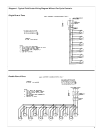
Inspection
Responsibility should be assigned to a dependable
individual at the job site to receive material. Each shipment
should be carefully checked against the bill of lading. The
shipping receipt should not be signed until all items listed on
the bill of lading have been accounted for.
Check carefully for concealed damage. Any shortage or
damages should be reported to the delivering carrier.
Damaged material becomes the delivering carrier's
responsibility, and should not be returned to the manufacturer
unless prior approval is given to do so. When uncrating, care
should be taken to prevent damage. Heavy equipment should
be left on units shipping base until it has been moved to the
final location.
System Warranty
This equipment is designed to operate properly and
produce rated capacity when installed in accordance with
accepted industry standards. Failure to meet the following
conditions may result in voiding of the system warranty:
1. System piping must be installed following industry
standards for good piping practices.
2. System must be thoroughly leak checked before initial
charging.
3. Power supply to system must meet the following
conditions:
Installation
NOTE: Installation and maintenance to be performed only by
qualified personnel who are familiar with local codes
and regulations, and experienced with this type of
equipment.
CAUTION: Sharp edges and coil surfaces are a potential
injury hazard. Avoid contact with them.
Unit Location
Units are designed for outdoor application and may be
mounted on a roof or concrete slab (ground level installation).
Roof mounted units should be installed level on steel channels
or an I-beam frame to support the unit above the roof. Use of
vibration pads or isolators is recommended. The roof must be
strong enough to support the weight of the unit. Concrete slabs
used for unit mounting should be installed level and be properly
supported to prevent settling. A one-piece concrete slab with
footings extending below the frost line is recommended.
The dry cooler should be located far enough away from
any wall or other obstruction to provide sufficient clearance for
air entrance. Do not attach ductwork to the coil inlet or fan
outlet. Care should be taken to avoid air recirculation conditions
that can be caused by sight screening, walls, etc. Also keep
unit fan discharge away from any building air intakes. See
page 10 for space and location requirements.
Sound Vibration
Units should be installed away from occupied spaces and
above or outside of utility areas, corridors and auxiliary spaces
to reduce the transmission of sound and vibration to occupied
spaces. The refrigerant piping should be flexible enough to
prevent the transmission of noise and vibration from the unit
into the building. If the refrigerant lines are to be suspended
from the structure of the building, isolation hangers should be
used to prevent the transmission of vibration. Where piping
passes through a wall, it is advisable to pack fiberglass and
sealing compound around the lines to minimize vibration and
retain flexibility in the lines.
The unit needs to be secured in its final location. Holes
are provided in the base runner for this purpose.
WARNING:
There may be more than one source of
electrical current in this unit. Do not
service before disconnecting all power
supplies.
a. Voltage for 208/230 motors not less than
195 volts or more than 253 volts.
b. All other voltages must not exceed +/- 10%
of nameplate ratings.
c. Phase imbalance not to exceed 2%.
4. All controls and safety switch circuits properly
connected per wiring diagram.
5. Factory installed wiring must not be changed
without written factory approval.
2














